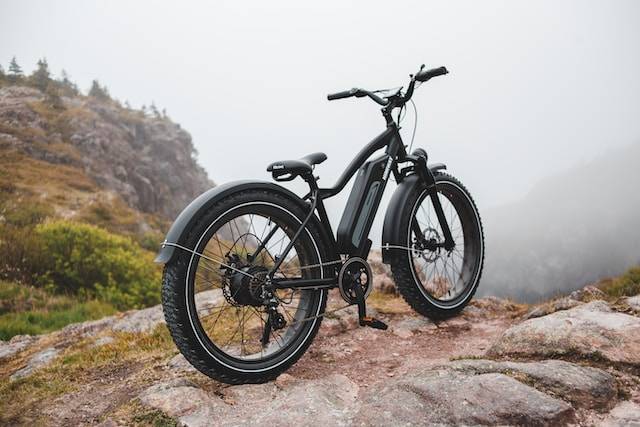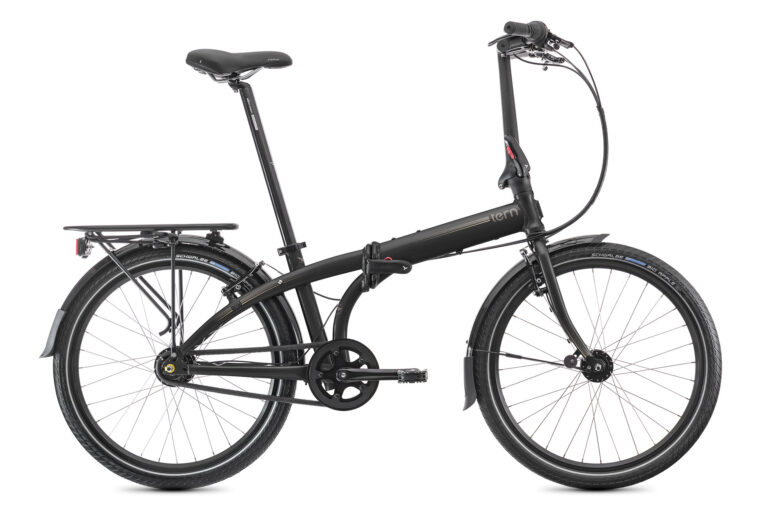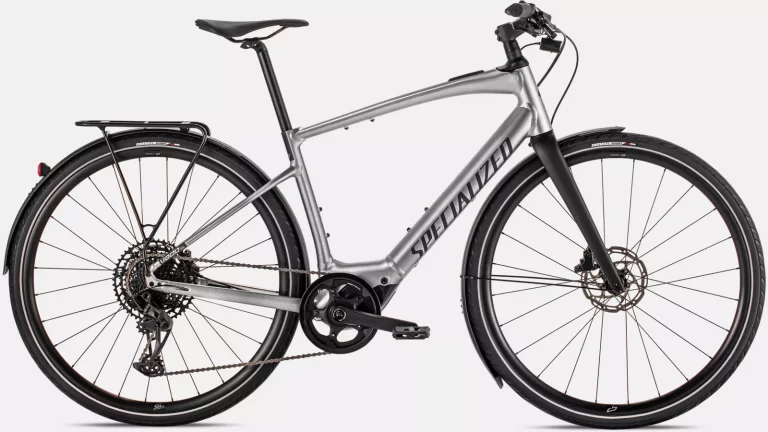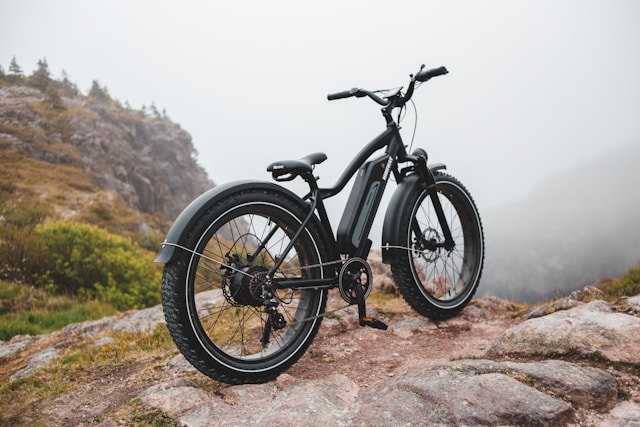What is the Future for Electric Bikes?
Last Updated on May 27, 2024 by Kristina Grant
In recent years, there has been a significant surge in the popularity of eBikes, revolutionizing the way people commute, exercise, and explore their surroundings. These electric-powered bicycles offer a versatile and eco-friendly alternative to traditional modes of transportation, catering to a wide range of riders, from urban commuters to outdoor enthusiasts.
The rising popularity of eBikes can be attributed to several factors. Firstly, their ability to assist while pedaling makes them accessible to a broader demographic, including those who may have physical limitations or live in hilly areas. Additionally, eBikes offer a convenient and cost-effective solution to urban congestion and parking woes, allowing riders to easily navigate through traffic and park effortlessly.
However, beyond their convenience and accessibility, understanding how eBikes are evolving in terms of technology and design is crucial. As with any rapidly advancing industry, staying informed about the latest innovations and trends is essential for both consumers and industry professionals alike.
Advancements in battery technology, motor efficiency, lightweight materials, and smart features are continuously reshaping the landscape of electric biking. These developments not only improve the performance and usability of eBikes but also contribute to their safety, comfort, and sustainability.
Therefore, delving into the evolution of eBikes in terms of technology and design allows us to grasp the full potential of these innovative vehicles. By exploring the latest trends and anticipating future developments, we can better appreciate the transformative impact eBikes are poised to have on mobility, recreation, and environmental conservation.
Key Takeaways
- Battery technology is improving, leading to longer range and better performance.
- Motor efficiency enhancements result in smoother rides and increased power.
- Lightweight materials and design innovations prioritize comfort and aesthetics.
- Smart features and connectivity options enhance convenience and safety.
- AI-assisted riding technologies are reshaping the eBike experience.
- Sustainability and regulatory considerations are driving industry standards.
- The future of electric biking holds exciting possibilities for innovation and growth.
Advancements in Battery Technology
Perhaps no technological innovation has been more consequential than the evolution of battery technology for electric bikes. Recent years have witnessed remarkable strides in eBike battery design and efficiency, propelling the industry forward and expanding the possibilities for riders worldwide.
One of the most notable developments in eBike battery technology is the quest for enhanced energy density and longevity. Manufacturers are constantly pushing the boundaries to create batteries that are lighter, more compact, and capable of storing greater amounts of energy. This pursuit of excellence is epitomized by the keyword “Latest advancements in eBike battery technology,” which encapsulates the ongoing efforts to deliver cutting-edge power solutions to riders.
The implications of these advancements are manifold, with one of the most significant being the extension of battery life in next-generation electric bicycles. Riders can now enjoy longer journeys without the worry of running out of power, thanks to batteries that offer increased capacity and improved efficiency. This not only enhances the overall riding experience but also opens up new possibilities for exploration and adventure.
The impact on range and performance cannot be overstated. With batteries capable of storing more energy, eBikes can travel greater distances on a single charge, making them suitable for a wider range of applications, from daily commuting to long-distance touring. Additionally, improved battery efficiency translates into more consistent power delivery, ensuring a smoother and more responsive ride for cyclists of all levels.
The advancements in eBike battery technology represent a pivotal moment in the evolution of electric biking. As these innovations continue to mature and proliferate, riders can expect to enjoy even greater freedom, convenience, and reliability in their electric cycling endeavors. Whether it’s tackling challenging terrain or simply cruising through the city streets, the future of eBiking is bright, powered by batteries that push the boundaries of what’s possible.
RELATED CONTENT – Can you Charge Electric Bikes at Home?
RELATED CONTENT – Guide to Choosing the Right Electric Bike Battery
Motor Efficiency Improvements
The evolution of electric bike motors stands as a testament to the relentless pursuit of performance and efficiency within the eBike industry. Over the years, electric bike motors have undergone a remarkable transformation, driven by advancements in technology and a commitment to delivering an unparalleled riding experience to cyclists around the globe.
At the heart of this evolution lies the phrase “Efficiency improvements in electric bike motors,” which encapsulates the ongoing efforts to optimize motor performance while minimizing energy consumption. Manufacturers have dedicated substantial resources to research and development, resulting in motors that are lighter, more compact, and increasingly efficient.
One of the key drivers behind these efficiency improvements is the refinement of motor components and design. Through innovative engineering techniques and the use of cutting-edge materials, motor manufacturers have been able to reduce friction, minimize heat loss, and maximize power output. This not only enhances the overall performance of electric bike motors but also extends their lifespan, ensuring reliability and durability for riders.
Advancements in motor efficiency have a direct impact on both performance and range. By minimizing energy loss during operation, efficient motors can deliver more power to the wheels, resulting in improved acceleration, hill-climbing ability, and overall responsiveness. This translates into a smoother and more enjoyable riding experience for cyclists, regardless of their skill level or riding conditions.
The increased efficiency of electric bike motors contributes to extended range on a single charge. With motors that require less energy to operate, eBikes can travel further distances without draining the battery, opening up new possibilities for exploration and adventure. Whether it’s tackling long commutes or embarking on epic bikepacking journeys, riders can rely on efficient motors to provide consistent performance and reliable power delivery.
The evolution of electric bike motors represents a significant milestone in the advancement of electric biking. As efficiency improvements continue to drive innovation in motor technology, cyclists can look forward to an exciting future filled with eBikes that are more powerful, more efficient, and more capable than ever before.
RELATED CONTENT – Affordable Electric Bikes Under $500
RELATED CONTENT – Are Chinese Electric Bikes Any Good?
Lightweight Materials and Design Innovations
The marriage of lightweight materials and design innovations has ushered in a new era of sleek, agile, and high-performance eBikes. Manufacturers are constantly pushing the boundaries of what’s possible, leveraging cutting-edge materials and creative design concepts to create bikes that are not only powerful and efficient but also comfortable and stylish.
The utilization of innovative lightweight materials for ebike frames is a cornerstone of this evolution. This underscores the industry’s commitment to reducing weight without compromising structural integrity or performance. Materials like carbon fiber, aluminum alloys, and advanced composites have become increasingly prevalent, offering a winning combination of strength, durability, and weight savings.
The importance of lightweight materials cannot be overstated, particularly in the context of electric biking. By minimizing overall bike weight, manufacturers can enhance agility, responsiveness, and maneuverability, resulting in a more dynamic and engaging riding experience for cyclists. Additionally, lighter eBikes are easier to handle and transport, making them ideal for urban commuters and recreational riders alike.
However, lightweight materials are not the sole focus of eBike design. Equally important are aesthetics and comfort, as highlighted by the keyword “Design trends for comfortable and stylish eBikes.” Modern consumers demand bikes that not only perform well but also look good and feel great to ride. As such, manufacturers are investing in design innovations that prioritize both form and function.
Comfort features such as ergonomic saddles, adjustable handlebars, and suspension systems are becoming standard fare on many eBikes, ensuring a smooth and enjoyable ride even over rough terrain. At the same time, designers are exploring bold new aesthetic trends, incorporating sleek lines, vibrant colors, and eye-catching details to create bikes that are as visually appealing as they are functional.
The integration of lightweight materials and design innovations represents a holistic approach to eBike development. By marrying performance with comfort and style, manufacturers are able to cater to the diverse needs and preferences of riders, delivering bikes that excel in every aspect of the riding experience. Whether navigating city streets or tackling off-road trails, cyclists can count on lightweight, stylish eBikes to elevate their journey to new heights.
RELATED CONTENT – Guide to GPS on Electric Bikes
RELATED CONTENT – Can I Install Accessories Like Racks or Baskets to an Electric Bike?
Integration of Smart Features
In the rapidly evolving landscape of electric biking, the integration of smart features represents a transformative shift that is reshaping the way cyclists interact with their eBikes. With advancements in technology and connectivity, modern electric bicycles are becoming more than just modes of transportation—they are intelligent companions designed to enhance the riding experience in profound ways.
The integration of smart features in modern eBikes is encapsulated by keywords like “Smart features integration in modern electric bikes” and “AI-assisted riding technologies for electric bicycles.” These terms encompass a wide range of innovative functionalities that leverage sensors, connectivity, and artificial intelligence to deliver unprecedented convenience, safety, and performance.
One of the most prominent examples of smart features in eBikes is the integration of connectivity options, such as Bluetooth and Wi-Fi, which enable seamless communication between the bike, rider, and external devices. Riders can now sync their eBikes with smartphones or smartwatches to access real-time data on speed, distance traveled, battery life, and more. This not only provides valuable insights into their riding habits but also allows for remote monitoring and control of key functions, such as adjusting pedal assistance levels or locking/unlocking the bike.
Furthermore, the advent of AI-assisted riding technologies is revolutionizing the way cyclists interact with their eBikes. These intelligent systems leverage machine learning algorithms to analyze data from onboard sensors and provide personalized recommendations and assistance to riders in real-time. For example, AI-powered adaptive cruise control can automatically adjust the speed of the eBike based on traffic conditions, while predictive maintenance algorithms can alert riders to potential issues before they arise, ensuring optimal performance and reliability.
Beyond convenience, the integration of smart features in eBikes also offers significant safety benefits. Advanced collision detection systems can alert riders to potential hazards, such as approaching vehicles or pedestrians, allowing them to react quickly and avoid accidents. Similarly, GPS tracking and anti-theft features provide peace of mind by helping riders locate and recover stolen bikes, reducing the risk of loss or damage.
The integration of smart features represents a paradigm shift in the world of electric biking, ushering in a new era of connectivity, intelligence, and convenience. As these technologies continue to evolve and mature, riders can expect eBikes to become even smarter, safer, and more intuitive, enhancing the overall riding experience and unlocking new possibilities for exploration and adventure.
Connectivity Options and AI-Assisted Riding
Connectivity options and AI-assisted riding technologies are revolutionizing the way cyclists interact with their eBikes, offering a seamless and personalized riding experience like never before. As the industry continues to embrace digital innovation, these advancements are shaping the future of electric biking by enhancing convenience, safety, and performance for riders worldwide.
The concept of connectivity options for eBikes encompasses a diverse array of features and functionalities designed to keep riders informed, connected, and in control of their riding experience. From Bluetooth and Wi-Fi connectivity to smartphone integration and GPS tracking, modern electric bicycles offer a host of connectivity options that allow riders to stay connected on the go. Riders can sync their eBikes with smartphones or smartwatches to access real-time data on speed, distance traveled, battery life, and more, empowering them to make informed decisions and optimize their riding experience.
The integration of AI-assisted riding technologies represents a significant leap forward in the evolution of electric biking. By leveraging artificial intelligence and machine learning algorithms, eBikes can analyze data from onboard sensors and provide personalized recommendations and assistance to riders in real-time. For example, AI-powered adaptive cruise control can automatically adjust the speed of the eBike based on traffic conditions, ensuring a smooth and safe ride for cyclists. Similarly, predictive maintenance algorithms can alert riders to potential issues before they arise, allowing them to address maintenance needs proactively and minimize downtime.
One of the key ways in which AI can enhance the riding experience is through personalized assistance and recommendations. By analyzing data on riding habits, terrain, and environmental conditions, AI algorithms can provide tailored guidance to help riders optimize their performance and efficiency. For example, AI-powered route planning tools can suggest the most efficient and scenic routes based on a rider’s preferences and objectives, while predictive power management systems can adjust pedal assistance levels to conserve battery power and extend range.
AI-assisted riding technologies also offer significant safety benefits for riders. Advanced collision detection systems can alert riders to potential hazards, such as approaching vehicles or pedestrians, allowing them to react quickly and avoid accidents. Similarly, AI-powered stability control systems can analyze data from onboard sensors to detect and correct imbalances, reducing the risk of accidents caused by loss of control or instability.
Connectivity options and AI-assisted riding technologies represent a groundbreaking convergence of digital innovation and electric biking, offering riders unprecedented levels of convenience, safety, and performance. As these technologies continue to evolve and mature, riders can expect eBikes to become even smarter, safer, and more intuitive, unlocking new possibilities for exploration, adventure, and enjoyment on two wheels.
RELATED CONTENT – Mokwheel Asphalt Electric Bike Review
RELATED CONTENT – Mokwheel Obsidian Electric Bike Review
Sustainability and Regulatory Considerations
Sustainability initiatives and regulatory considerations play a pivotal role in shaping the electric bike industry’s trajectory, ensuring that growth and innovation are balanced with environmental responsibility and compliance. As the demand for eBikes continues to soar, manufacturers and policymakers alike are embracing initiatives to minimize the ecological footprint of electric biking and promote sustainable practices across the board.
At the forefront of sustainability initiatives in the eBike industry is the adoption of sustainable manufacturing practices. Manufacturers are increasingly prioritizing environmentally friendly materials, production processes, and supply chains to reduce carbon emissions and minimize waste. This commitment to sustainability is epitomized by keywords like “Sustainable manufacturing practices in eBike industry,” which highlight the industry’s collective efforts to minimize its environmental impact.
From the use of recycled and biodegradable materials to the implementation of energy-efficient manufacturing processes, eBike manufacturers are exploring a range of strategies to reduce their environmental footprint. By embracing sustainable practices, manufacturers not only mitigate the negative environmental impacts associated with eBike production but also contribute to the preservation of natural resources and ecosystems.
Furthermore, regulatory changes impacting electric bike usage are also driving industry-wide efforts to promote sustainability and environmental responsibility. Governments around the world are recognizing the potential of eBikes to reduce greenhouse gas emissions, alleviate traffic congestion, and promote active transportation. As a result, policymakers are implementing regulations and incentives to encourage the adoption and usage of eBikes as a sustainable mode of transportation.
These regulatory changes encompass a variety of measures, including subsidies for eBike purchases, investment in cycling infrastructure, and the establishment of standards for eBike design and performance. By creating a supportive regulatory framework, governments can facilitate the widespread adoption of eBikes and promote their role in achieving sustainability goals.
Regulatory changes also play a crucial role in ensuring compliance with safety standards and promoting responsible riding practices among eBike users. By establishing clear guidelines for eBike usage, policymakers can enhance safety on roads and trails, protect the rights of cyclists, and minimize conflicts with other road users.
Sustainability initiatives and regulatory considerations are integral to the continued growth and development of the eBike industry. By embracing sustainable manufacturing practices and promoting responsible riding habits, stakeholders can ensure that the benefits of electric biking are realized in an environmentally sustainable and socially responsible manner. As the industry continues to evolve, collaboration between manufacturers, policymakers, and consumers will be essential to achieving a more sustainable and equitable future for electric biking.
Future Trends and Expectations
The future of electric biking is filled with promise and potential, as the industry continues to push the boundaries of innovation and redefine the possibilities for cyclists around the globe. As we look ahead, several key trends and developments are poised to shape the future of electric biking, from advancements in motor power and efficiency to evolving standards for safety and performance.
One of the most anticipated future trends in electric biking is the continued evolution of eBike motor power and efficiency. Manufacturers are investing heavily in research and development to create motors that are lighter, more powerful, and more energy-efficient than ever before. Keywords like “Future trends in eBike motor power and efficiency” highlight the industry’s ongoing efforts to enhance the performance and capabilities of electric bike motors, opening up new possibilities for riders of all skill levels.
These advancements in motor technology are expected to revolutionize the riding experience, enabling eBikes to tackle more challenging terrain, reach higher speeds, and deliver greater range on a single charge. Riders can look forward to eBikes that offer unprecedented levels of performance and responsiveness, allowing them to explore new destinations and conquer new adventures with confidence and ease.
Evolving standards for electric bike safety and performance are expected to play a significant role in shaping the future of the industry. As eBikes become increasingly integrated into urban transportation networks and recreational landscapes, there is a growing need for standardized regulations and guidelines to ensure the safety of riders and other road users.
Topics such as “Evolving standards for electric bike safety and performance” underscore the importance of establishing clear guidelines for eBike design, operation, and maintenance. By setting standards for factors such as speed, braking, lighting, and visibility, policymakers can enhance safety on roads and trails, promote responsible riding practices, and protect the rights of cyclists.
Looking ahead, we can also expect to see continued innovation in areas such as battery technology, lightweight materials, and connectivity options, as manufacturers strive to deliver eBikes that are more efficient, more comfortable, and more convenient than ever before. From advancements in regenerative braking systems to the integration of artificial intelligence and augmented reality features, the possibilities for future developments are virtually limitless.
The future of electric biking holds immense promise for riders, manufacturers, and policymakers alike. By embracing emerging trends and technologies, stakeholders can unlock new opportunities for sustainable mobility, outdoor recreation, and personal empowerment, shaping a brighter and more exciting future for the world of electric biking.
FAQs
The distance an eBike can travel on a single charge varies depending on several factors, including the capacity of the battery, the level of pedal assistance used, terrain, rider weight, and weather conditions. On average, modern eBikes can travel anywhere from 20 to 100 miles on a single charge, with some high-end models boasting even greater range capabilities.
Yes, eBike batteries are typically replaceable. Most eBikes feature removable battery packs that can be easily swapped out for a new or fully charged battery. However, it’s essential to ensure compatibility with the eBike model and battery specifications before purchasing a replacement battery.
Yes, eBikes can generally be used in rainy weather, but it’s essential to take precautions to protect the electrical components from moisture damage. Waterproofing measures such as sealing electrical connections, using waterproof covers, and applying corrosion-resistant coatings can help ensure the longevity and performance of your eBike in wet conditions.
Age restrictions for riding eBikes vary depending on local regulations and laws. In many places, there are no specific age restrictions for riding eBikes, but riders are typically required to adhere to the same traffic laws and regulations as traditional bicycles. It’s essential to familiarize yourself with the laws and regulations in your area regarding eBike usage.
The charging time for an eBike battery depends on the capacity of the battery and the type of charger used. On average, it takes anywhere from 3 to 6 hours to fully charge an eBike battery from empty to full capacity. However, some fast chargers can reduce charging times significantly, providing a full charge in as little as 1 to 2 hours.
Yes, like any other bicycle, eBikes require regular maintenance to ensure optimal performance and longevity. This includes tasks such as cleaning and lubricating the drivetrain, inspecting and adjusting brakes and gears, checking tire pressure, and periodically servicing the motor and battery components. Following the manufacturer’s maintenance recommendations is crucial to keep your eBike in top condition.
The rules regarding eBike usage on bike trails vary depending on local regulations and trail management policies. In many areas, eBikes are permitted on bike trails designated for use by bicycles, while some trails may have restrictions or bans on motorized vehicles, including eBikes. It’s essential to check with local authorities or trail managers to determine the rules and regulations regarding eBike usage on specific trails.
When choosing an eBike, it’s essential to look for safety features such as reliable brakes (both mechanical and hydraulic), bright and visible lighting (front and rear), reflective elements for visibility in low light conditions, sturdy frame construction, and stable handling characteristics. Additionally, some eBikes may offer advanced safety features such as electronic stability control, collision detection systems, and integrated alarm systems for theft prevention.
Most eBikes are designed to be ridden with pedal assistance, meaning that the motor provides assistance while the rider pedals. However, some eBike models feature a throttle-only mode that allows riders to propel the bike solely using the motor without pedaling. It’s essential to check local regulations and laws regarding throttle-only eBike usage, as some areas may have restrictions on motorized vehicles operated without pedal assistance.
The cost of eBikes varies widely depending on factors such as brand, model, features, components, and build quality. Entry-level eBikes can start at around $1,000 to $2,000, while high-end models with advanced features and premium components can cost upwards of $5,000 or more. It’s essential to consider your budget and intended usage when choosing an eBike, as well as factor in additional costs such as accessories, maintenance, and insurance.
Conclusion
As the world of electric biking continues to evolve and innovate, it’s clear that we are on the brink of an exciting new era in mobility and recreation. From advancements in battery technology and motor efficiency to the integration of smart features and sustainability initiatives, eBikes are poised to revolutionize the way we travel, exercise, and connect with the world around us.
By understanding how eBikes are evolving in terms of technology and design, we can better appreciate the incredible potential of these innovative vehicles to enhance our lives and contribute to a more sustainable future. Whether you’re a seasoned cyclist or new to the world of electric biking, there has never been a better time to explore the possibilities of eBiking and embark on your own electrifying adventure.
Join the Conversation!
Have questions about eBikes or want to share your own experiences and insights? We’d love to hear from you! Drop a comment below and let us know your thoughts on the future of electric biking. Don’t forget to share this article with your friends and fellow enthusiasts to spread the excitement of eBiking far and wide. Together, we can pedal towards a brighter, greener, and more electrifying future!
External Sources
- Industry Reports:
- Delve into comprehensive industry reports from market research firms such as Statista, NPD Group, and MarketResearch.com. These reports offer valuable insights into market trends, consumer preferences, and growth projections for the eBike industry.
- Manufacturer Websites:
- Visit the websites of leading eBike manufacturers such as Bosch, Shimano, and Yamaha to learn more about their latest product offerings, technological innovations, and sustainability initiatives. Manufacturer websites often provide detailed specifications, user manuals, and customer reviews for their eBike models.
- Research Articles:
- Explore scholarly research articles and academic publications from reputable journals such as Transportation Research Part D: Transport and Environment, Journal of Cleaner Production, and Sustainability. These articles offer scientific insights into topics such as battery technology, motor efficiency, and environmental impact assessment in the context of electric biking.
- Online Forums and Communities:
- Join online forums and communities dedicated to electric biking, such as ElectricBikeReview.com, Pedelecs.co.uk, and Reddit’s r/ebikes community. These platforms provide opportunities to connect with fellow enthusiasts, share experiences, and seek advice on eBike-related topics.
- Government and Regulatory Websites:
- Consult government websites and regulatory agencies such as the U.S. Department of Transportation (DOT), European Union Agency for Railways (ERA), and International Organization for Standardization (ISO) for information on eBike regulations, safety standards, and compliance requirements in different jurisdictions.
Kristina Grant is not just an enthusiast but a true authority on electric bikes. Nestled in the coastal beauty of Virginia, Kristina has found the perfect backdrop for her passion for electric biking. As a dedicated wife and homeschooling mom, her life revolves around family, faith, and the thrill of adventure.
Originally hailing from Ohio, Kristina's journey with electric bikes began as a curiosity and quickly evolved into a deep expertise. Her blog is a testament to her love for electric biking, combining her fascination for eco-friendly transportation with her coastal lifestyle.
When she's not cruising the beach on her electric bike, you'll find Kristina indulging in her other loves: long walks along the shore, getting lost in a good book, and cherishing moments with her loved ones. With a heart as big as her love for animals, especially cats, Kristina brings a unique perspective to the electric bike world, grounded in her strong faith in God and her dedication to a sustainable lifestyle.
Through her blog, Kristina shares her extensive knowledge of electric bikes, offering valuable insights, tips, and recommendations to fellow enthusiasts. Whether you're a seasoned rider or a newcomer to the electric bike scene, Kristina's blog is your go-to source for all things electric biking, fueled by her passion, expertise, and the scenic beauty of coastal Virginia.







